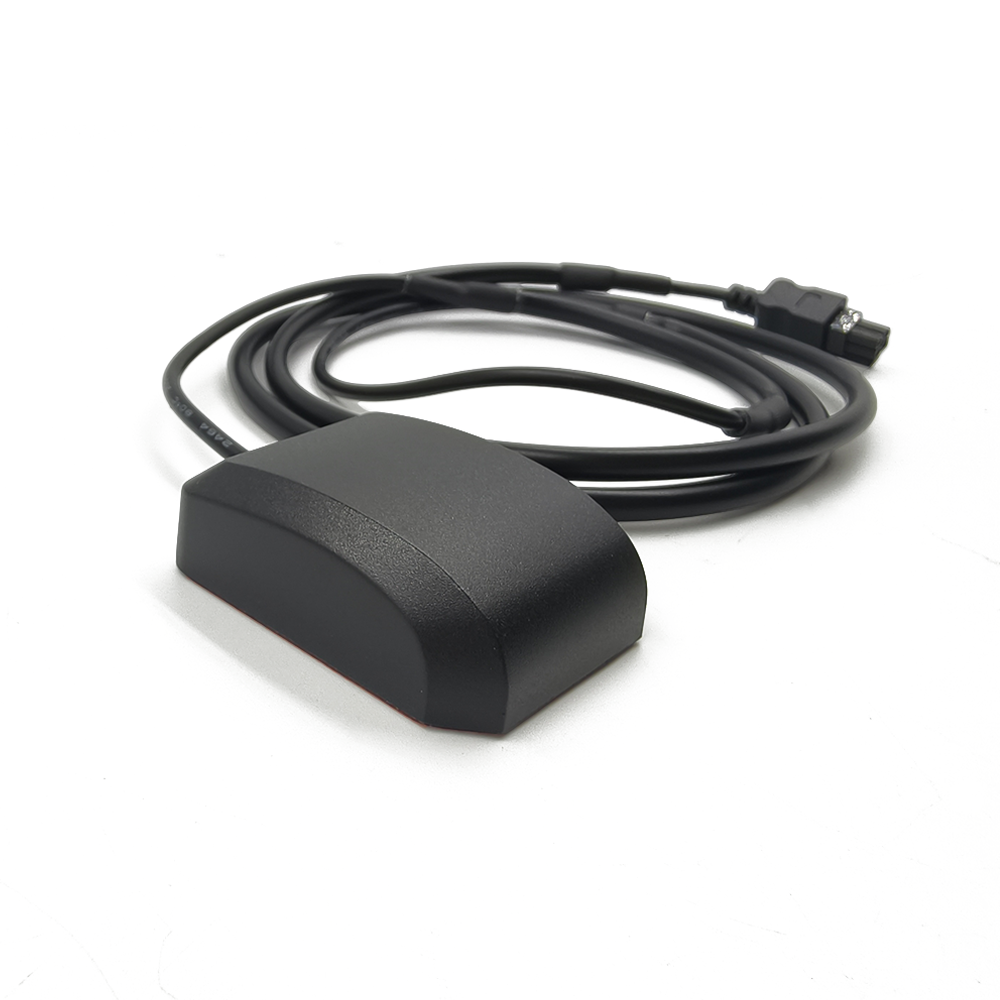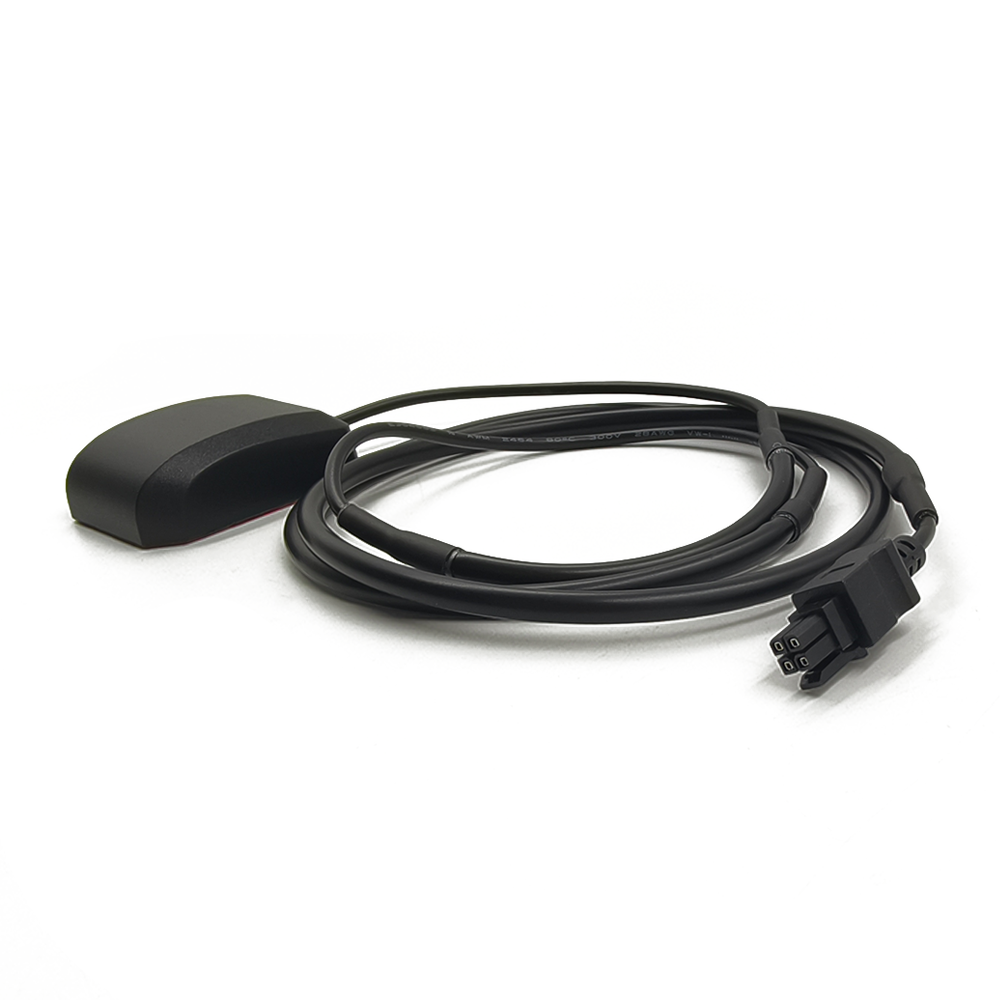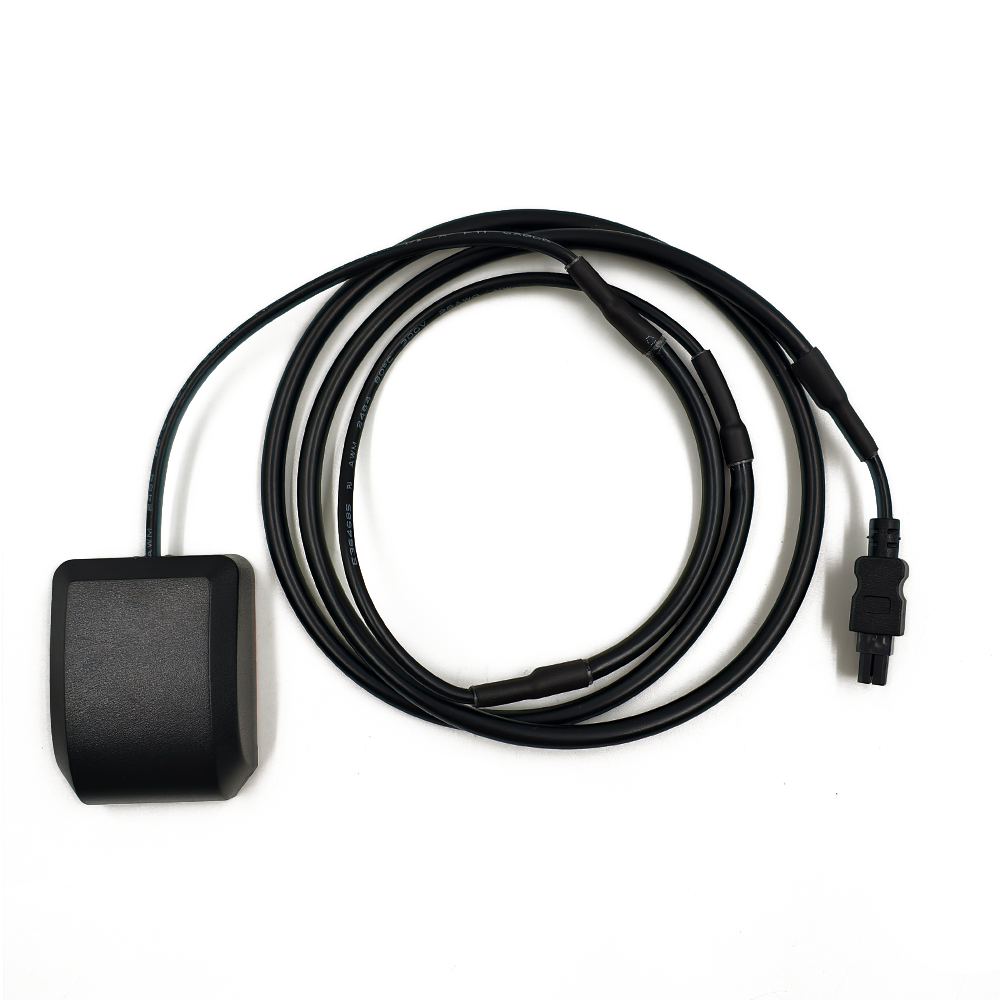5.1 Key Applications of High-Performance GNSS External Antennas
5.1.1 Precision Agriculture
Precision agriculture is an application that relies heavily on high-performance GNSS external antennas to improve crop yields, reduce input costs, and minimize environmental impact. In precision agriculture, GNSS technology is used for a variety of tasks, such as automated guidance of farm machinery (tractors, harvesters, and sprayers), variable-rate application of fertilizers and pesticides, and crop mapping.
High-performance GNSS external antennas provide the accurate positioning information required for these tasks. For example, automated guidance systems use GNSS to steer farm machinery along precise paths, ensuring that the machinery does not overlap or miss areas of the field. This reduces the amount of fuel, seed, and fertilizer used, as well as the time required to complete the task. The accuracy of the guidance system depends on the performance of the GNSS antenna. High-performance antennas with multi-band operation and multipath mitigation techniques can provide positioning accuracy of a few centimeters, which is essential for precise guidance.
Variable-rate application systems use GNSS to map the field and determine the specific areas that require more or less fertilizer or pesticide. The GNSS antenna provides the position information that is used to create a detailed map of the field, which is then used to control the application rate of the input. This ensures that the inputs are applied only where they are needed, reducing waste and minimizing the environmental impact. High-performance GNSS external antennas are able to maintain accurate positioning even in rural areas where the sky visibility may be limited by trees or terrain, ensuring that the variable-rate application system works reliably.
5.1.2 Autonomous Vehicles
The development of autonomous vehicles (AVs) is one of the most exciting and rapidly evolving fields, and high-performance GNSS external antennas play a crucial role in enabling the navigation and positioning capabilities of these vehicles. Autonomous vehicles require highly accurate and reliable positioning information to navigate safely and efficiently on roads. GNSS is one of the key technologies used for positioning in AVs, and high-performance external antennas are essential to ensure that the GNSS system provides the required level of performance.
In autonomous vehicles, GNSS is used in combination with other sensors, such as LiDAR, cameras, and inertial measurement units (IMUs), to provide a comprehensive positioning solution. The GNSS antenna provides the absolute position of the vehicle, while the other sensors provide relative position and environmental information. High-performance GNSS external antennas with multi-band operation can receive signals from multiple GNSS constellations, increasing the number of satellites available for positioning and improving the reliability of the GNSS system. This is particularly important in urban environments, where buildings can block satellite signals, and the availability of multiple constellations ensures that the vehicle can still receive accurate positioning information.
Multipath mitigation is also critical in autonomous vehicles, as multipath interference can cause errors in the GNSS positioning, leading to unsafe navigation. High-performance GNSS external antennas with choke ring ground planes or polarization control techniques can reduce the impact of multipath, ensuring that the positioning information is accurate. Additionally, the rugged design of these antennas makes them suitable for use in automotive environments, where they are exposed to vibration, extreme temperatures, and moisture.
5.1.3 Surveying and Mapping
Surveying and mapping are applications that require the highest level of positioning accuracy, and high-performance GNSS external antennas are the backbone of modern surveying and mapping systems. Traditional surveying methods, such as using total stations, are time-consuming and labor-intensive. GNSS-based surveying, on the other hand, is faster, more efficient, and can cover larger areas, making it the preferred method for most surveying and mapping projects.
High-performance GNSS external antennas are used in both static and dynamic surveying applications. In static surveying, the antenna is placed at a fixed location for an extended period of time, and the GNSS receiver records the satellite signals to determine the precise position of the location. This method is used for establishing control points, which are reference points used in other surveying projects. High-performance antennas with multi-band operation and low-noise amplifiers provide the high-precision positioning required for static surveying, with accuracy levels of a few millimeters.
In dynamic surveying, also known as kinematic surveying, the GNSS antenna is mounted on a moving platform, such as a vehicle or a boat, and the receiver records the position of the platform in real-time. This method is used for mapping large areas, such as roads, rivers, and coastlines. High-performance GNSS external antennas with real-time kinematic (RTK) capability are used in dynamic surveying. RTK GNSS uses a base station and a rover station; the base station transmits correction data to the rover station, which uses this data to improve the accuracy of its position calculation. High-performance antennas at both the base and rover stations ensure that the correction data is transmitted and received accurately, providing real-time positioning accuracy of a few centimeters.
5.1.4 Aerospace and Defense
The aerospace and defense industries are major users of high-performance GNSS external antennas, where reliable and accurate positioning, navigation, and timing (PNT) information is critical for mission success and safety. In aerospace applications, GNSS is used for aircraft navigation, including en-route navigation, approach, and landing. High-performance GNSS external antennas are mounted on aircraft to receive satellite signals, providing the flight crew with real-time position information. These antennas must be designed to withstand the harsh conditions of the aerospace environment, including high altitudes, extreme temperatures (ranging from -55°C to 85°C or higher), and high-speed airflow. They also need to have a wide beamwidth to ensure that satellite signals can be received even when the aircraft is in steep turns or at high angles of attack.
In commercial aviation, the use of GNSS has become increasingly important for precision approach and landing procedures. The Federal Aviation Administration (FAA) and the European Union Aviation Safety Agency (EASA) have approved GNSS-based approaches, such as the Localizer Performance with Vertical Guidance (LPV) approach, which allows aircraft to land at airports with limited ground-based navigation infrastructure. High-performance GNSS external antennas are essential for these approaches, as they provide the high accuracy and reliability required to meet the strict safety standards of the aviation industry. These antennas can receive signals from multiple GNSS constellations, ensuring that there is no single point of failure, and they incorporate multipath mitigation techniques to reduce errors caused by signal reflections from the ground or other aircraft.
In defense applications, high-performance GNSS external antennas are used in a wide range of platforms, including military aircraft, ships, ground vehicles, and unmanned aerial vehicles (UAVs). Military operations require PNT information that is not only accurate but also resilient to jamming and spoofing. Jamming involves the transmission of strong signals to interfere with the reception of GNSS signals, while spoofing involves the transmission of fake GNSS signals to deceive the receiver into calculating an incorrect position. High-performance GNSS external antennas for defense applications are designed with anti-jamming and anti-spoofing capabilities.
Anti-jamming antennas use techniques such as beamforming to focus the antenna's gain on the satellite signals while suppressing signals from jamming sources. Beamforming involves adjusting the phase and amplitude of the signals received by each element of an antenna array to create a directional radiation pattern. This allows the antenna to "steer" its beam towards the satellites and away from jamming sources, reducing the impact of jamming. Anti-spoofing antennas, on the other hand, use signal authentication techniques to verify the integrity of the GNSS signals. They can detect fake signals by comparing the received signals with known characteristics of legitimate satellite signals, ensuring that the receiver only uses authentic signals for positioning.
5.2 Future Trends in High-Performance GNSS External Antennas
5.2.1 Integration with Artificial Intelligence (AI) and Machine Learning (ML)
The integration of artificial intelligence (AI) and machine learning (ML) technologies is expected to be a major future trend in the development of high-performance GNSS external antennas. AI and ML can be used to enhance the performance of the antenna in various ways, such as improving interference mitigation, optimizing signal reception, and enabling adaptive beamforming.
In interference mitigation, AI and ML algorithms can be trained to recognize the characteristics of different types of interference, such as jamming signals, multipath signals, and signals from other wireless systems. Once trained, these algorithms can dynamically adjust the antenna's filtering and beamforming parameters to suppress the interference in real-time. For example, if the algorithm detects a jamming signal coming from a specific direction, it can adjust the beamforming pattern of the antenna array to reduce the gain in that direction, minimizing the impact of the jamming. This adaptive interference mitigation approach is more effective than traditional fixed-filtering techniques, as it can handle a wide range of interference types and scenarios.
AI and ML can also be used to optimize the signal reception of the antenna. The algorithms can analyze historical data on satellite signal strength, sky visibility, and environmental conditions to predict the optimal position and orientation of the antenna for maximum signal reception. This is particularly useful in dynamic applications, such as autonomous vehicles or UAVs, where the antenna's position and the environmental conditions are constantly changing. The AI/ML system can continuously adjust the antenna's position or beamforming pattern based on real-time data, ensuring that the antenna always receives the strongest possible satellite signals.
5.2.2 Miniaturization and Low-Power Design
As GNSS technology becomes more integrated into small, portable devices, such as wearables, drones, and IoT (Internet of Things) sensors, there is a growing demand for miniaturized high-performance GNSS external antennas with low-power consumption. Miniaturization involves reducing the physical size of the antenna without sacrificing its performance, while low-power design ensures that the antenna can operate for extended periods of time on battery power.
Advancements in materials science and antenna design are enabling the development of smaller GNSS antennas. For example, the use of high-dielectric-constant ceramic materials in patch antennas allows for a significant reduction in the size of the antenna element. Ceramic patch antennas can be made much smaller than traditional patch antennas using FR4 substrate, while still maintaining high gain and efficiency. Additionally, the development of multi-layer antenna designs, where multiple antenna elements are stacked in a vertical configuration, allows for the integration of multiple frequency bands into a single, compact antenna package.
Low-power design is another key focus area for future GNSS external antennas. Active antennas, which require power for the low-noise amplifier (LNA), are being designed with more efficient LNAs that consume less power. For example, the use of complementary metal-oxide-semiconductor (CMOS) technology in the fabrication of LNAs has resulted in amplifiers with lower power consumption and higher efficiency. Additionally, some antennas are incorporating power management systems that can dynamically adjust the power supply to the LNA based on the signal strength. When the satellite signal strength is high, the power to the LNA can be reduced, saving energy, and when the signal strength is low, the power can be increased to ensure that the signal is amplified sufficiently.
5.2.3 Enhanced Resilience to Jamming and Spoofing
With the increasing reliance on GNSS for critical applications, such as autonomous vehicles, aviation, and defense, the need for high-performance GNSS external antennas with enhanced resilience to jamming and spoofing is becoming more urgent. Future antennas will incorporate more advanced anti-jamming and anti-spoofing technologies to ensure that the GNSS system remains operational even in hostile environments.
One promising technology for enhanced anti-jamming is the use of phased array antennas with a large number of elements. Phased array antennas can create multiple narrow beams, each pointing to a different satellite, while simultaneously creating nulls (regions of low gain) in the direction of jamming sources. The more elements the array has, the more precise the beamforming and nulling capabilities, allowing the antenna to suppress even strong jamming signals. Additionally, the use of digital beamforming, where the signals from each antenna element are processed digitally, allows for more flexible and adaptive beamforming patterns compared to analog beamforming.
For anti-spoofing, future GNSS external antennas will incorporate more sophisticated signal authentication techniques. One approach is the use of encrypted satellite signals. Some GNSS constellations, such as Galileo and BeiDou, already provide encrypted signals for authenticated positioning. Future antennas will be designed to receive and process these encrypted signals, ensuring that the receiver only uses signals that have been verified as authentic. Another anti-spoofing technique is the use of multi-constellation and multi-frequency reception. By receiving signals from multiple GNSS constellations and multiple frequency bands, the antenna can cross-verify the position information obtained from each signal. If a spoofed signal is present, it is likely to be inconsistent with the signals from other constellations or frequency bands, allowing the receiver to detect and reject the spoofed signal.
5.2.4 Integration with Other Positioning Technologies
To further improve the reliability and accuracy of positioning systems, future high-performance GNSS external antennas will be integrated with other positioning technologies, such as inertial navigation systems (INS), LiDAR, and visual odometry. This multi-sensor integration approach combines the strengths of each technology to overcome their individual limitations.
GNSS provides absolute positioning information with high accuracy over long periods of time, but it can be affected by signal blockage, interference, and multipath. INS, on the other hand, provides relative positioning information based on the measurement of acceleration and angular velocity. It is not affected by signal blockage or interference, but its accuracy degrades over time due to sensor drift. By integrating GNSS and INS, the strengths of both technologies can be leveraged. The GNSS antenna provides periodic updates to correct the drift of the INS, while the INS provides continuous positioning information when the GNSS signal is lost. This integration is particularly useful in applications such as autonomous vehicles and UAVs, where continuous and accurate positioning is essential.
LiDAR and visual odometry are other positioning technologies that can be integrated with GNSS. LiDAR uses laser pulses to measure the distance to objects in the environment, creating a 3D map of the surroundings. Visual odometry uses cameras to track the movement of the vehicle by comparing consecutive images. Both technologies provide relative positioning information that can be used to complement GNSS. For example, in urban canyons where GNSS signals are blocked, LiDAR or visual odometry can provide accurate positioning information until the GNSS signal is regained. The integration of GNSS with these technologies requires the development of advanced sensor fusion algorithms that can combine the data from multiple sensors in real-time. High-performance GNSS external antennas will play a key role in this integration by providing accurate and reliable GNSS data that can be fused with the data from other sensors.
Conclusion
6.1 Summary of Key Findings
High-performance GNSS external antennas are essential components of modern GNSS systems, enabling reliable and accurate positioning, navigation, and timing (PNT) in a wide range of applications and environments. This comprehensive analysis has covered the overview, design and construction, working principles, advantages and challenges, applications, and future trends of these antennas, revealing several key findings.
In terms of overview, high-performance GNSS external antennas come in various types, including active, passive, and multi-band antennas, each designed to meet the specific requirements of different applications. Active antennas, with their integrated low-noise amplifiers, excel in weak signal environments, while passive antennas are preferred for their simplicity and ruggedness. Multi-band antennas, which can receive signals from multiple GNSS constellations and frequency bands, are crucial for applications requiring high accuracy and reliability.
The design and construction of these antennas are critical to their performance. Antenna elements and arrays, such as single-element patch antennas and multi-element planar arrays, determine the radiation pattern and gain of the antenna. Substrate materials, such as FR4, Rogers RT/Duroid, and ceramics, affect the size, efficiency, and cost of the antenna, while the ground plane design plays a key role in reducing multipath interference. The enclosure design, meanwhile, ensures that the antenna can withstand harsh environmental conditions, such as extreme temperatures, moisture, and vibration, while minimizing the impact on signal transmission.
The working principles of high-performance GNSS external antennas involve signal reception, processing, and multipath mitigation. The antennas capture weak satellite signals, amplify them (in the case of active antennas), filter out unwanted interference, and condition the signals for the receiver. Multipath mitigation techniques, such as choke ring ground planes and polarization control, are essential for reducing errors caused by reflected signals, ensuring accurate positioning.
The advantages of these antennas are significant, including enhanced signal reception in challenging environments, improved positioning accuracy and precision, and flexibility in installation and placement. However, they also face several challenges, such as interference from other wireless systems, the impact of environmental factors on performance, and high cost and complexity.
In terms of applications, high-performance GNSS external antennas are widely used in precision agriculture, autonomous vehicles, surveying and mapping, and aerospace and defense. In each of these applications, the antennas provide the accurate and reliable PNT information required for optimal performance and safety.
6.2 Importance of High-Performance GNSS External Antennas in the Evolving Tech Landscape
As technology continues to evolve, the demand for accurate and reliable PNT information is growing rapidly. Emerging technologies such as autonomous vehicles, IoT, and 5G are all dependent on GNSS for various applications, from navigation and tracking to time synchronization. High-performance GNSS external antennas are critical to meeting this demand, as they enable GNSS systems to operate effectively in the increasingly complex and challenging environments of the modern world.
In the automotive industry, the development of autonomous vehicles is set to revolutionize transportation. These vehicles require continuous and accurate positioning information to navigate safely, and high-performance GNSS external antennas are essential to providing this information. By receiving signals from multiple GNSS constellations and mitigating the effects of multipath and interference, these antennas ensure that autonomous vehicles can operate reliably in urban, rural, and highway environments.
In the IoT sector, the number of connected devices is growing exponentially, and many of these devices require GNSS for tracking and monitoring. High-performance GNSS external antennas, with their miniaturized and low-power designs, are ideal for integration into small IoT devices, such as asset trackers and smart sensors. These antennas provide the accurate positioning information needed to track the location of assets, monitor the movement of goods, and ensure the safety and security of people and property.
In the aerospace and defense industries, the need for resilient PNT information is more critical than ever. With the increasing threat of jamming and spoofing, high-performance GNSS external antennas with enhanced anti-jamming and anti-spoofing capabilities are essential to ensuring the success of military operations and the safety of commercial aviation. These antennas provide the reliable PNT information needed to guide aircraft, ships, and ground vehicles, even in hostile environments.
6.3 Outlook for Future Developments
The future of high-performance GNSS external antennas looks promising, with several key trends expected to drive their development in the coming years. The integration of AI and ML technologies will enable more adaptive and intelligent antenna systems that can optimize performance in real-time. Miniaturization and low-power design will allow these antennas to be integrated into an even wider range of devices, from wearables to small drones. Enhanced resilience to jamming and spoofing will ensure that GNSS systems remain operational in the face of growing threats. And the integration with other positioning technologies will further improve the reliability and accuracy of PNT systems.
As these technologies continue to advance, high-performance GNSS external antennas will play an increasingly important role in shaping the future of transportation, communication, agriculture, and defense. They will enable new applications and services that were previously not possible, driving innovation and economic growth. However, to fully realize the potential of these antennas, continued investment in research and development is needed. This includes research into new materials, antenna designs, signal processing algorithms, and anti-jamming/anti-spoofing technologies.
In conclusion, high-performance GNSS external antennas are vital components of modern PNT systems, with a wide range of applications and a promising future. Their ability to provide accurate, reliable, and resilient PNT information makes them essential in the evolving tech landscape, and their continued development will be key to unlocking the full potential of emerging technologies.




































































 Language
Language
 En
En Cn
Cn Korean
Korean

 Home >
Home > 








 18665803017 (Macro)
18665803017 (Macro)













